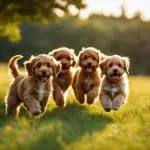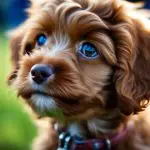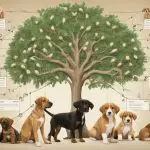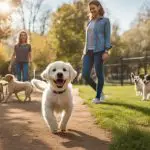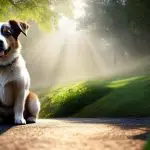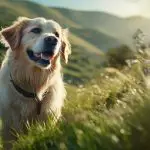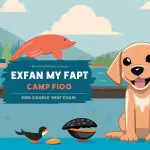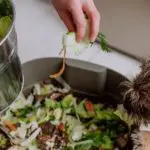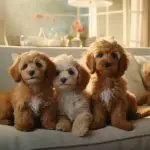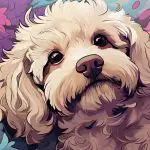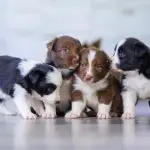When it comes to bulldogs, most people are familiar with the popular English Bulldog. However, there is another breed that often gets overlooked - the Old English Bulldog. These two breeds may share a similar name, but they have distinct differences that set them apart.
So, what exactly are the key differences between the Old English Bulldog and the English Bulldog? Are they just variations of the same breed, or do they have unique characteristics that make them stand out? Let's delve into their temperaments, appearances, exercise needs, and more to unravel the fascinating dissimilarities between these two beloved breeds.
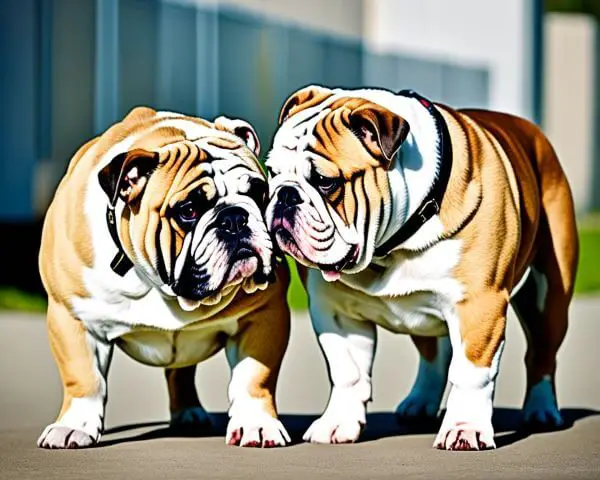
Key Takeaways:
- The Old English Bulldog and the English Bulldog have distinct temperaments and characteristics.
- Understanding their origins and history can shed light on how these breeds differ.
- Physical traits such as size, coat, and features help differentiate between the two breeds.
- Temperament and personality play a significant role in choosing the right bulldog for you.
- Knowing their exercise and activity needs is crucial for their overall well-being.
Origins and History
Understanding the origins and history of the Old English Bulldog and the English Bulldog is key to appreciating the distinct characteristics of these breeds. Let's take a closer look at how these two bulldog varieties were developed and their historical significance.
The Old English Bulldog
The Old English Bulldog, also known as the Victorian Bulldog, traces its roots back to 18th-century England. This breed was originally bred for bull-baiting, a popular sport during that time. With a muscular build, strong jaws, and a fierce disposition, the Old English Bulldog excelled in its role as a tenacious and powerful opponent to bulls in the arena.
However, as bull-baiting was gradually outlawed in the early 19th century, the breed's purpose shifted, and it faced near-extinction due to lack of demand. Fortunately, a group of dedicated breeders sought to revive the Old English Bulldog, focusing on preserving its original appearance and temperament.
The English Bulldog
The English Bulldog, known for its iconic wrinkled face and distinctive underbite, has a somewhat different history. It also originated in England, but its development began after bull-baiting was banned.
The English Bulldog was selectively bred to retain its physical attributes while reducing its aggression and improving its sociability. Breeders aimed to create a more docile and companionable bulldog, suitable for a domestic setting. Over time, this new breed gained popularity and became synonymous with the British culture and identity.
The Old English Bulldog and the English Bulldog have strikingly different histories. While the Old English Bulldog was primarily used for bull-baiting, the English Bulldog evolved into a beloved companion and symbol of British heritage.
To gain a comprehensive understanding of these breeds, it is essential to explore their respective histories, as they contribute to the distinct characteristics and temperaments that define them today.
Appearance and Physical Traits
When comparing the Old English Bulldog and the English Bulldog, it is important to consider their distinct physical characteristics. Both breeds exhibit unique features that set them apart from each other.
The Old English Bulldog is a robust and muscular breed with a powerful build. They have a medium-sized head, a strong jaw, and expressive, round eyes that radiate intelligence. Known for their strength, they possess a broad chest and a sturdy, compact frame.
The English Bulldog, on the other hand, is characterized by its unmistakable wrinkled face and distinctive undershot bite. They have a large, square head with a flattened skull and wide-set, dark eyes. Their body is thick-set and muscular, displaying a strong and compact physique.
While both breeds share similarities in terms of their stocky build and compact size, there are notable differences in their appearance. The Old English Bulldog tends to have a more athletic physique, while the English Bulldog has a more pronounced and exaggerated head shape.
When it comes to coat types, the Old English Bulldog typically has a shorter, smoother coat that requires minimal grooming. They come in a variety of colors, including brindle, fawn, and white with patches. In contrast, the English Bulldog's coat is short and dense, requiring regular brushing to remove loose hair.
Overall, the Old English Bulldog and the English Bulldog possess their own unique physical traits that contribute to their distinct appearances. The Old English Bulldog showcases an athletic and muscular build, while the English Bulldog is renowned for its wrinkled face and compact body.
Key Points:
- The Old English Bulldog has a robust and muscular build, while the English Bulldog has a thick-set and compact physique.
- The Old English Bulldog typically has a shorter, smoother coat, while the English Bulldog's coat is short and dense.
- The Old English Bulldog is known for its athletic physique, while the English Bulldog has a more exaggerated head shape.
Temperament and Personality
When comparing the temperament and personality of the Old English Bulldog and the English Bulldog, it is essential to understand their distinct characteristics and traits. While both breeds share common traits as bulldogs, they also have notable differences that make each breed unique.
The Old English Bulldog is known for its courage, determination, and assertiveness. This breed is highly energetic and eager to please its owner. With proper training and socialization, the Old English Bulldog can be loyal, affectionate, and playful. They are known to be protective of their families and make excellent guard dogs. However, they may have a high prey drive and require active management when around smaller animals.
On the other hand, the English Bulldog has a calmer and more docile temperament. They are generally friendly, easygoing, and love being around people. English Bulldogs are known for their gentle and affectionate nature, making them excellent companions for families and individuals alike. They tend to get along well with children and other pets, making them a great choice for multi-pet households.
"The Old English Bulldog is highly energetic and assertive, while the English Bulldog has a more docile and gentle temperament. Both breeds can be loyal and affectionate, making them suitable companions for different types of owners."
When it comes to trainability, the Old English Bulldog can be a bit stubborn at times. They require consistent and firm training methods to ensure they understand their boundaries and commands. Positive reinforcement techniques work well with this breed, as they respond well to praise and rewards. Early socialization is crucial to help them become well-rounded dogs.
In contrast, the English Bulldog tends to be more relaxed and less demanding in terms of training. They are intelligent and eager to please, making them relatively easy to train. However, they can also be stubborn at times and may require patience and consistency. Engaging in positive reinforcement methods and using treats or toys as rewards can help with their training.
It's important to note that both the Old English Bulldog and the English Bulldog may exhibit some breed-specific traits. For example, the Old English Bulldog may display protective instincts towards their family, while the English Bulldog may be more sociable and tolerant of strangers.
Exercise and Activity Needs
When it comes to their exercise and activity needs, the Old English Bulldog and the English Bulldog have some notable differences. Understanding these differences is crucial for providing them with the physical activity they require to maintain their overall health and well-being.
The Old English Bulldog is a breed that thrives on physical activities. They have high energy levels and require regular exercise to prevent weight gain and keep their muscles toned. Daily walks, play sessions, and interactive games are essential for meeting their exercise needs. Engaging in activities that stimulate their minds, such as puzzle toys or obedience training, can also help keep them mentally stimulated.
In comparison, the English Bulldog is known for having a more laid-back and sedentary nature. While they still require regular exercise, their activity needs are typically lower than those of the Old English Bulldog. Daily walks and short play sessions are generally sufficient to meet their exercise requirements. It's important to note that overexertion can be detrimental to the health of English Bulldogs, as they are prone to overheating and breathing difficulties due to their brachycephalic (short-snouted) nature.
To summarize:
The Old English Bulldog requires regular, moderate to high-intensity exercise to meet their high energy levels and keep them physically and mentally stimulated.
The English Bulldog has lower activity needs and benefits from regular but less strenuous exercise to prevent weight gain and promote overall well-being.
Now, let's see a comparison between the exercise and activity needs of these two breeds:
| Old English Bulldog | English Bulldog |
|---|---|
| High energy levels | Lower energy levels |
| Requires regular, moderate to high-intensity exercise | Benefits from regular but less strenuous exercise |
| Daily walks, play sessions, and interactive games | Daily walks and short play sessions |
| Activities that stimulate their minds | N/A |
As with any breed, it's essential to tailor the exercise routine to your individual dog's needs, taking into account their age, health, and overall fitness level. Consulting with a veterinarian can help you determine the appropriate amount and type of exercise for your Old English Bulldog or English Bulldog.
Health Concerns
When considering the Old English Bulldog and the English Bulldog, it's important to be aware of the health concerns that are specific to each breed. While both breeds share some similarities, there are distinct differences in the health issues they may face.
Old English Bulldog Characteristics:
- Resilient and robust breed
- Generally healthier compared to the English Bulldog
- Less prone to brachycephalic respiratory issues
- May still experience common health problems associated with bulldogs
English Bulldog Characteristics:
- Predisposed to brachycephalic respiratory issues
- Prone to hip dysplasia and other joint problems
- May develop skin allergies and infections
- Higher risk of obesity and related health issues
Note: It's crucial to choose a reputable breeder who prioritizes the health and well-being of their dogs. Regular veterinary check-ups, a balanced diet, and proper exercise can help mitigate the potential health concerns in both breeds.
In summary, while the Old English Bulldog tends to be more resilient and healthier overall compared to the English Bulldog, both breeds have their own specific health considerations. Understanding these concerns and taking proactive measures can ensure the well-being of your beloved bulldog.
Grooming and Maintenance
Proper grooming and maintenance are essential for keeping both the Old English Bulldog and the English Bulldog healthy and happy. While these two breeds share some similarities in terms of coat care, there are also a few key differences to keep in mind.
Coat Care
Both the Old English Bulldog and the English Bulldog have short and dense coats that require regular brushing. This helps to remove loose hair, prevent matting, and maintain a clean and healthy coat. A soft-bristle brush or a grooming mitt is recommended for these breeds.
Old English Bulldogs have a straight, smooth, and glossy coat that is relatively low-maintenance. Weekly brushing helps to distribute natural oils and keep their coat looking its best.
On the other hand, English Bulldogs have a thicker and more wrinkled coat, which requires a bit more attention. It's important to clean and dry the skin folds carefully to prevent irritation or infection. Additionally, regular bathing is necessary to keep their coat clean and odor-free.
Bathing Needs
When it comes to bathing, both breeds benefit from regular cleaning to keep their skin and coat healthy. However, it's important not to overdo it as excessive bathing can strip away the natural oils that protect their skin.
Old English Bulldogs typically need a bath once every 6-8 weeks or as needed. Using a mild dog shampoo and lukewarm water is recommended. Be sure to thoroughly rinse the coat and dry it completely to avoid any trapped moisture.
English Bulldogs, on the other hand, may require more frequent baths due to their tendency to develop skin allergies or irritations. It's best to consult with a veterinarian to determine the appropriate bathing schedule and products to use for your English Bulldog.
Grooming Considerations
In addition to regular brushing and bathing, there are a few grooming considerations specific to each breed.
For Old English Bulldogs, it's important to regularly check their ears for any signs of infection or irritation. Cleaning their ears with a veterinarian-recommended solution and gently drying them will help prevent issues related to moisture buildup.
English Bulldogs, with their adorable wrinkled faces, require extra attention to facial folds. Regularly cleaning and drying these folds with a damp cloth or specialized wipes can help prevent skin folds from becoming a breeding ground for bacteria or yeast infections.
Furthermore, both breeds benefit from routine nail trims, teeth brushing, and regular check-ups with a veterinarian to maintain their overall health and well-being.
Training and Socialization
Training and socialization are key factors in shaping a dog's behavior and ensuring they become well-rounded and obedient companions. When comparing the Old English Bulldog temperament versus the English Bulldog, it's essential to understand their individual learning styles and effective training strategies.
The Old English Bulldog is known for its intelligence and eagerness to please. They are quick learners and respond well to positive reinforcement techniques. Training sessions should be structured, consistent, and rewards-based, using treats and praise to motivate them. Early socialization is crucial for this breed to expose them to different environments, people, and other animals, helping them develop good manners and confidence.
On the other hand, the English Bulldog can display a more stubborn streak, making them slightly more challenging to train. However, with patience, consistency, and positive training methods, they can still achieve excellent results. Shorter training sessions, around 10-15 minutes, work best for their shorter attention span. Socialization should begin at an early age to prevent them from becoming overly protective or reactive towards strangers and other animals.
"Training gives you the opportunity to build a strong bond with your Bulldog. By focusing on positive reinforcement and consistency, you can help them become well-behaved and obedient companions."
Both breeds benefit from early training and socialization to prevent behavioral issues and instill good manners. Consistency, patience, and positive reinforcement are essential for successful training outcomes and nurturing a strong bond with your Bulldog.
| Training and Socialization | Old English Bulldog | English Bulldog |
|---|---|---|
| Learning Style | Quick learners, respond well to positive reinforcement | Slightly more stubborn, need patient and consistent training |
| Training Techniques | Rewards-based, treats, and praise | Positive reinforcement, shorter training sessions |
| Socialization | Early exposure to different environments and social interactions | Early socialization to prevent protectiveness or reactivity |
Compatibility with Families and Children
When considering a family pet, the compatibility of a breed with children is a crucial factor to take into account. Both the Old English Bulldog and the English Bulldog are known for their affectionate nature and love for their families. However, there are some differences in their temperament and behavior that may influence their interactions with children.
The Old English Bulldog: Old English Bulldogs have a friendly and gentle temperament, making them generally well-suited for families with children. They are known for their patience and tolerance, often forming strong bonds with their young human companions. These loyal dogs are protective of their families and will keep a watchful eye over children, ensuring their safety.
The English Bulldog: Similarly, English Bulldogs are known for their affectionate and docile nature. They have a calm demeanor, which can make them excellent companions for children. English Bulldogs are generally patient and tolerant, demonstrating a natural instinct to protect their family members, including children.
Both the Old English Bulldog and the English Bulldog can be incredibly gentle and loving with children, making them great family pets.
It's important to note that while both breeds are typically good with children, adult supervision is always necessary to ensure the safety of both the child and the dog. It is recommended to teach children proper behavior and handling techniques around dogs, including how to approach, interact, and respect their furry friends.
Whether you choose an Old English Bulldog or an English Bulldog, it's essential to prioritize early socialization and training to instill good manners and prevent any potential behavioral issues. Introducing your dog to various environments, people, and experiences from a young age will help foster a well-rounded and confident dog who can adapt to different situations.
Considerations for households with young children:
- Both breeds may drool, so you may need to be prepared for some extra slobber.
- Their stocky build can make them unintentionally knock down small children if they are not aware of their surroundings. Supervision is key.
- Both breeds have a strong protective instinct, which may lead to perceived aggression if they feel their family is in danger. It's essential to provide proper socialization and training to ensure they understand appropriate behavior.
- Regular exercise and mental stimulation are necessary to prevent boredom and any potential destructive behaviors, especially in households with young children.
In conclusion, both the Old English Bulldog and the English Bulldog have a compatible temperament with families and children. Their gentle, protective nature and affectionate personalities make them excellent choices for those seeking a family pet. However, it's vital to consider the individual needs, behavior, and training requirements of each breed to ensure a harmonious and safe household dynamic.
Similarities between the Old English Bulldog and the English Bulldog
While the Old English Bulldog and the English Bulldog have noticeable differences, there are also several key similarities that link these two popular breeds. Understanding the shared traits and characteristics can help guide you in making a decision about which bulldog may be the right fit for you.
1. History and Origins
Both the Old English Bulldog and the English Bulldog share a common ancestry rooted in the historical origins of the bulldog breed. Originally bred for bull-baiting, these dogs have a rich history that connects them to their working-class roots in England.
2. Affectionate and Loyal Nature
One prominent similarity between these bulldog breeds is their affectionate and loyal nature towards their owners. Both the Old English Bulldog and the English Bulldog are known for their devotion and love for their families, making them wonderful companions and family pets.
3. Strength and Muscular Build
Another shared characteristic is their strong and muscular build. Both the Old English Bulldog and the English Bulldog possess a robust physique that reflects their history as working dogs. Their well-developed muscles provide them with power and endurance.
4. Sociable and Friendly with Proper Socialization
Given the right socialization and training, both the Old English Bulldog and the English Bulldog can exhibit sociable and friendly behavior towards people and other animals. Proper socialization is essential for shaping their interactions and ensuring their ability to coexist harmoniously in various environments.
5. Adaptability to Living Environments
Both breeds show an impressive adaptability to different living environments. Whether you reside in a small apartment or a spacious house, the Old English Bulldog and the English Bulldog can adjust well as long as they receive the necessary exercise, mental stimulation, and companionship.
To summarize, while the Old English Bulldog and the English Bulldog have their own distinct characteristics, they also share notable similarities in terms of their history, affectionate nature, muscular build, sociability, and adaptability. Understanding these shared traits can help you make an informed decision when choosing the right bulldog breed for your lifestyle and preferences.
Making a Choice: Which Bulldog is Right for You?
Choosing the right bulldog breed that fits your lifestyle and preferences can be a challenging decision. In this section, we will help you make an informed choice between the Old English Bulldog and the English Bulldog. Consider the factors below to determine which breed aligns best with your needs and desires.
Temperament and Personality
The temperament and personality of a bulldog are crucial considerations when selecting a breed. The Old English Bulldog is known for its protective instincts, loyalty, and affectionate nature. They are generally friendly, patient, and make excellent family pets. On the other hand, the English Bulldog is calm, friendly, and great with children. They are also known for their easy-going nature and adaptability to various living situations.
Activity and Exercise Needs
The activity and exercise level required by a bulldog also play a significant role in choosing the right breed for you. The Old English Bulldog has a moderate exercise requirement and enjoys outdoor activities. Regular walks, playtime, and mental stimulation are essential for their well-being. In contrast, the English Bulldog has lower activity needs and prefers a more relaxed lifestyle. Short walks and indoor play sessions are usually sufficient to keep them happy and healthy.
Grooming and Maintenance
Grooming and maintenance requirements are factors that should not be overlooked. Both bulldog breeds have different coat types that require specific care. The Old English Bulldog has a short, dense coat that needs minimal grooming. Regular brushing to remove loose hair and occasional baths are typically enough to maintain their coat's health. The English Bulldog, with its wrinkled skin, requires more attention. Wrinkles need to be cleaned regularly to prevent irritation, and their facial folds should be kept dry to avoid infections.
Health Considerations
Health concerns are vital considerations when choosing between bulldog breeds. The Old English Bulldog is generally more robust and less prone to certain health issues compared to the English Bulldog. However, both breeds may experience some common health problems, including hip dysplasia, breathing difficulties, and skin allergies. Regular vet check-ups, proper nutrition, and exercise can help mitigate these issues.
| Factors to Consider | Old English Bulldog | English Bulldog |
|---|---|---|
| Temperament | Protective, loyal, affectionate | Calm, friendly, easy-going |
| Activity Level | Moderate | Low |
| Grooming | Minimal | Requires attention due to wrinkles |
| Health Concerns | Generally more robust | Prone to certain health issues |
Based on these factors, evaluate what matters most to you in a bulldog breed. If you prefer a dog with protective instincts and moderate exercise needs, the Old English Bulldog may be the better choice. However, if you prioritize a calm and friendly companion with lower exercise requirements, the English Bulldog might be the breed for you.
Remember, it's essential to spend time researching each breed, talking to reputable breeders or rescues, and considering your own lifestyle and preferences before making a decision. By carefully weighing these considerations, you can choose the bulldog breed that will bring joy, companionship, and a perfect fit into your life.
Conclusion
In conclusion, understanding the differences between the Old English Bulldog and the English Bulldog can greatly assist you in choosing the breed that is best suited to your needs and preferences. By considering factors such as their origins, appearance, temperament, exercise needs, health concerns, and compatibility with your family, you can make an informed decision.
It is important to take the time to thoroughly research both breeds and consult with reputable breeders or rescues. They can provide valuable insights and guidance to ensure that you select the right bulldog for your lifestyle.
Remember, owning a bulldog is a long-term commitment, so it is crucial to choose a breed that aligns with your expectations and capabilities. Whether you opt for the lively and energetic Old English Bulldog or the more laid-back English Bulldog, responsible ownership and nurturing will be key to establishing a happy and fulfilling relationship with your furry companion.
FAQ
What is the difference between the Old English Bulldog and the English Bulldog?
The Old English Bulldog and the English Bulldog have notable differences in their origins, appearance, temperament, exercise needs, health concerns, and compatibility with families. Understanding these distinctions can help you choose the breed that best suits your preferences and lifestyle.
What are the origins and history of the Old English Bulldog and the English Bulldog?
The Old English Bulldog and the English Bulldog have unique historical backgrounds. The Old English Bulldog was developed in England for bull-baiting and later became extinct, while the English Bulldog evolved as a companion breed with a less aggressive temperament.
How do the Old English Bulldog and the English Bulldog differ in terms of appearance and physical traits?
The Old English Bulldog tends to be larger and more muscular than the English Bulldog. They have different coat types, with the Old English Bulldog often having a short and smooth coat, while the English Bulldog has a distinct wrinkled face and a stocky build.
What are the differences in temperament and personality between the Old English Bulldog and the English Bulldog?
The Old English Bulldog is known for its protective nature, high energy levels, and strong-willed personality. On the other hand, the English Bulldog is generally more relaxed, friendly, and affectionate. They may have different temperaments and behavior traits, so it's essential to consider your preferences and lifestyle when choosing between the two breeds.
How do the exercise and activity needs of the Old English Bulldog compare to those of the English Bulldog?
The Old English Bulldog requires more exercise and physical activity compared to the English Bulldog. Their higher energy levels and strong muscular build necessitate regular exercise, including walks, playtime, and mental stimulation. The English Bulldog, while also needing exercise, is generally less active and has lower exercise requirements.
What specific health concerns should I be aware of for the Old English Bulldog and the English Bulldog?
Both the Old English Bulldog and the English Bulldog may have certain health concerns that are breed-specific. For example, the Old English Bulldog may be prone to respiratory issues, hip dysplasia, and certain skin conditions. The English Bulldog, on the other hand, may be susceptible to eye problems, heart conditions, and joint issues. Regular veterinary care, proper nutrition, and exercise can help mitigate these potential health concerns.
What are the grooming and maintenance requirements for the Old English Bulldog and the English Bulldog?
The Old English Bulldog and the English Bulldog have different grooming needs. The Old English Bulldog typically has a shorter, easier-to-maintain coat that requires minimal grooming. The English Bulldog, with its wrinkles and folds, may require more attention to keep the skin clean and prevent any skin infections. Routine bathing, regular brushing, and cleaning of the facial wrinkles are important for both breeds.
How do the training and socialization needs of the Old English Bulldog compare to those of the English Bulldog?
While both breeds benefit from early socialization and positive reinforcement training, the Old English Bulldog may require more consistent and structured training due to its strong-willed nature. The English Bulldog tends to be more eager to please and may respond well to training that incorporates rewards and praise.
Are the Old English Bulldog and the English Bulldog compatible with families and children?
Both the Old English Bulldog and the English Bulldog can be compatible with families and children. However, their temperaments and behaviors differ. The Old English Bulldog may be more protective and active, while the English Bulldog is generally more friendly and relaxed. It's essential to supervise interactions between bulldogs and children, as with any breed, to ensure safety and promote positive relationships.
What are the similarities between the Old English Bulldog and the English Bulldog?
Although the Old English Bulldog and the English Bulldog have distinct differences, they also share some similarities. Both breeds are loyal, affectionate, and can make excellent companions for the right owner. They may also have similar exercise and grooming needs, although individual variations exist.
How can I decide between the Old English Bulldog and the English Bulldog for my lifestyle?
Making a choice between the Old English Bulldog and the English Bulldog depends on various factors. Consider your preferences for energy levels, temperament, exercise needs, grooming requirements, and compatibility with your family and children. Research each breed thoroughly, consult with reputable breeders or rescues, and spend time with both breeds to make an informed decision.
Read my latest posts here:
- Golden Cavapoo Guide: Care, Training & TipsAs a devoted dog lover, I can't help but feel a sense of joy and fulfillment whenever I see a wagging tail and a pair of eager eyes looking up at me. Dogs have this incredible ability to bring light, love, and companionship into our lives, and one particular breed that has stolen my heart… Read more: Golden Cavapoo Guide: Care, Training & Tips
- Adopt a Rescue Cavapoo Today – Find Your Buddy!Imagine coming home to a wagging tail, a warm snuggle buddy, and unconditional love. That's the joy of having a furry friend by your side. But what if I told you that you could not only experience the purest form of companionship but also change a life in the process? By adopting a rescue cavapoo,… Read more: Adopt a Rescue Cavapoo Today – Find Your Buddy!
- Black Cavapoo Puppies: Your Adorable GuideImagine coming home to a furry ball of excitement, wagging its tail and eagerly waiting for your return. Picture the joy of cuddling up on the sofa with a playful companion who brings laughter and warmth to your life. This is the magic that black Cavapoo puppies can bring to your world. Whether you're a… Read more: Black Cavapoo Puppies: Your Adorable Guide
- Straight Hair Cavapoo Traits and Care GuideHave you ever dreamed of having a furry companion who is not only adorable but also hypoallergenic? Someone who will bring joy and love into your life without triggering pesky allergies or leaving a trail of fur behind? Well, let me introduce you to the straight hair Cavapoo, the perfect blend of cuteness and allergy-friendly… Read more: Straight Hair Cavapoo Traits and Care Guide
- Managing Dog Peeing from Anxiety - Quick TipsDoes your dog experience anxiety that leads to peeing accidents? If so, you're not alone. Many dog owners struggle with this issue, wondering how they can help their furry friends overcome their anxiety and prevent these unwanted accidents. But fear not, because in this article, we will provide you with quick and effective tips to… Read more: Managing Dog Peeing from Anxiety - Quick Tips
- Anti-Pull Dog Leash: Enjoy Tangle-Free WalksAre you tired of your dog constantly pulling and tugging during walks, making the experience more stressful than enjoyable? Do you wish there was a solution to make your walks together more peaceful and hassle-free? Say goodbye to those tangled leashes and strained arms because we have the answer! Introducing the revolutionary anti-pull dog leash,… Read more: Anti-Pull Dog Leash: Enjoy Tangle-Free Walks
- Dog Ate Aspirin? Immediate Steps to Take NowAs dog owners, we prioritize the well-being of our furry companions. But what happens when your beloved pet accidentally ingests aspirin? Do you know what immediate steps to take? Are you aware of the potential harm it can cause? Let's dive into this critical topic and learn how to safeguard your dog's health. Accidental consumption… Read more: Dog Ate Aspirin? Immediate Steps to Take Now
- Understanding Dog Aggressive Behavior with PeersDo you ever wonder why some dogs exhibit aggressive behavior towards their fellow canines? Is aggression towards other dogs a common problem or just a result of poor training? In this section, we will delve into the complexities of dog aggressive behavior towards other dogs and explore effective training methods to address this issue. By… Read more: Understanding Dog Aggressive Behavior with Peers
- Old English Bulldog vs. English Bulldog DifferencesWhen it comes to bulldogs, most people are familiar with the popular English Bulldog. However, there is another breed that often gets overlooked - the Old English Bulldog. These two breeds may share a similar name, but they have distinct differences that set them apart. So, what exactly are the key differences between the Old… Read more: Old English Bulldog vs. English Bulldog Differences
- Bulldog Farts: Causes and How to Reduce ThemDo you own an adorable bulldog but find yourself constantly battling their smelly gas? Are you tired of searching for effective remedies to combat the flatulence in your furry friend? Look no further! In this article, we will dive into the causes of bulldog farts and provide you with essential tips to reduce them and… Read more: Bulldog Farts: Causes and How to Reduce Them
- Bloodhound and Lab Mix Puppies: Adorable CompanionsAre you looking for an adorable companion that combines the best traits of two popular breeds? Meet the Bloodhound and Lab mix puppies, the lovable designer dogs that are capturing hearts everywhere. These unique crossbreeds are not only incredibly cute but also offer a variety of benefits that make them stand out from purebred dogs.… Read more: Bloodhound and Lab Mix Puppies: Adorable Companions
- AKC Bulldog Colors Guide - Identify Your PupHave you ever wondered why bulldogs come in such a diverse range of colors? From brindle and fawn to white and black, the coat colors of bulldogs are a fascinating subject. But how well do you know the official American Kennel Club (AKC) bulldog colors and standards? Are you confident in identifying the color genetics… Read more: AKC Bulldog Colors Guide - Identify Your Pup
- How many nipples does a dog haveHave you ever wondered how many nipples a dog has and what their purpose is? We will explore the anatomy of a dog's nipples, including how many nipples female and male dogs have. We will also discuss common nipple problems in dogs and how to tell if a dog's nipples are healthy. If you're curious… Read more: How many nipples does a dog have
- Best brush for a CavapooWhen you first bring your adorable little Cavapoo home, you’ll still be gathering all the things you need to take the best care of him or her. This post has been updated on 27th Feb 2024. One of the best brushes I’ve found is the Big G Slicker Brush by Chris Christensen. The longer pins… Read more: Best brush for a Cavapoo
- Meet the Unique Cavapoo with Blue Eyes - A Rare BeautyAs a professional journalist, I've had the pleasure of writing about various dog breeds, but the Cavapoo with blue eyes stands out as a true rarity. This captivating canine boasts striking blue eyes that add to its already unique charm. The Cavapoo breed with blue eyes is a sight to behold, with a playful personality… Read more: Meet the Unique Cavapoo with Blue Eyes - A Rare Beauty
- Comparing Breeds: Poochon vs Cavapoo - A Detailed InsightWhen it comes to selecting a new pet, many people find themselves deciding between the Poochon and Cavapoo breeds. While both are popular for their hypoallergenic qualities and suitability as family pets, there are distinct differences between the two that potential owners should consider. In this article, we will provide a detailed comparison of the… Read more: Comparing Breeds: Poochon vs Cavapoo - A Detailed Insight
- Adorable Newborn Cavapoo Puppies: A Must-Have CompanionGreetings! As a professional copywriting journalist, I am delighted to explore with you the irresistible charm of newborn Cavapoo puppies in this article. If you're a dog lover looking for a furry friend, you'll want to know how Cavapoo puppies make the perfect companions. Let's discover the joys of welcoming these adorable little bundles of… Read more: Adorable Newborn Cavapoo Puppies: A Must-Have Companion
- Meet the Adorable Ginger Cavapoo: Your Perfect CompanionIf you are in search of the ultimate companion that is both affectionate and adaptive, look no further than the ginger Cavapoo. These charming little dogs are a crossbreed between a Cavalier King Charles Spaniel and a Poodle, resulting in a lovable combination of traits that make them the perfect addition to any family. One… Read more: Meet the Adorable Ginger Cavapoo: Your Perfect Companion
- Your Guide to Adorable Ruby Cavapoo PuppiesWelcome to my comprehensive guide on ruby Cavapoo puppies! As a professional copywriting journalist, I have extensive experience researching and writing about different dog breeds. In this guide, we will explore everything you need to know about the adorable ruby Cavapoo, including their breed information, care tips, and why they make a perfect addition to… Read more: Your Guide to Adorable Ruby Cavapoo Puppies
- Overcoming Challenges: Why I Hate My Cavapoo & How To Love ItAs a Cavapoo owner, I know firsthand the challenges and frustrations that come with having this adorable breed as a furry companion. Despite their cute appearance and affectionate nature, Cavapoos can sometimes exhibit problem behaviors that lead to feelings of dislike and even resentment towards them. If you've ever found yourself saying "I hate my… Read more: Overcoming Challenges: Why I Hate My Cavapoo & How To Love It
- Unbiased Jonas Cavapoo Puppies Reviews: Happy Pet Parents Speak OutWhy Cavapoo Puppies are Highly Sought After As a professional copywriting journalist, I have had the opportunity to interact with many dog breeds. However, Cavapoos stand out as one of the most sought after breeds. But why? Cavapoo puppies are a perfect blend of the adorable, fun-loving, and affectionate attributes of a Cavalier King Charles… Read more: Unbiased Jonas Cavapoo Puppies Reviews: Happy Pet Parents Speak Out
- Explore Adorable River's Edge Cavapoos: Your Perfect Family PetAre you looking for a furry companion to bring joy and love into your family? If you're based in the US then you could take a look at River's Edge Cavapoos. Cavapoos are adorable puppies which are the perfect mix of Cavalier King Charles Spaniel and Poodle, resulting in a loving and gentle temperament that… Read more: Explore Adorable River's Edge Cavapoos: Your Perfect Family Pet
- Unveiling the Timeline: How Long for Cavapoo Hair to Grow BackAs a professional copywriting journalist, I often come across concerned Cavapoo owners wondering how long it will take for their pet's hair to regrow. The answer is not straightforward since several factors come into play in determining the time it takes for Cavapoo hair growth. In this section, I will explore the timeline for Cavapoo… Read more: Unveiling the Timeline: How Long for Cavapoo Hair to Grow Back
- Enjoy Comfort & Warmth with Equafleece Cavapoo Sweaters!As the temperature drops, it's essential to keep our furry friends warm and comfortable. The Equafleece Cavapoo Sweaters are a perfect solution to keep your Cavapoo cozy during the winter months. Equafleece is a renowned brand that offers high-quality dog fleece, including customized clothing for specific breeds, shapes and sizes, including our beloved Cavapoos. Equafleece… Read more: Enjoy Comfort & Warmth with Equafleece Cavapoo Sweaters!
- Can Puppies Look Like Their Grandparents? Unravelling the Mystery!Have you ever noticed a striking resemblance between your new puppy and their grandparents? Perhaps they share the same colouring or have similar facial features? It's not uncommon for puppies to resemble their grandparents, and in this article, I will explore the fascinating topic of whether this is possible and why it happens. We will… Read more: Can Puppies Look Like Their Grandparents? Unravelling the Mystery!
- Does Dewormer Make Puppies Pee More? Find Out Now!As a puppy owner, you may have concerns about the effects of deworming medication on your furry friend. One common worry is whether dewormer makes puppies pee more frequently. It's understandable to have questions about such changes in your puppy's urinary habits and how they may affect their well-being. In this article, we will provide… Read more: Does Dewormer Make Puppies Pee More? Find Out Now!
- When Do Puppies Require Less Supervision? A Detailed Guide.As a new puppy owner, it's important to keep a close eye on your furry friend. Puppies are curious and energetic, which means they require constant supervision to stay safe. However, as your puppy grows and develops, they will start to become more independent and require less supervision. But when exactly do puppies require less… Read more: When Do Puppies Require Less Supervision? A Detailed Guide.
- Can Dogs Eat Croissants? Your Query Answered Simply.As a dog lover, I am always concerned about my furry friend's health and well-being. It is essential to be aware of what we offer our dogs, especially when it comes to food. One of the most common questions pet owners ask is, "Can dogs eat croissants?" Croissants are a popular pastry that many people… Read more: Can Dogs Eat Croissants? Your Query Answered Simply.
- Delicious Pastrami Dogs: A British Twist on a Classic FavouriteAs a professional copywriting journalist, I have seen many trends come and go in the food industry. However, one dish that has captured my attention lately is pastrami dogs. These gourmet hot dogs are a British twist on a classic American favourite, and they are taking the culinary world by storm. Picture a juicy hot… Read more: Delicious Pastrami Dogs: A British Twist on a Classic Favourite
- Discover the Lovable Beethoven Dog Breed - All You Need to KnowAre you looking for a loyal and affectionate companion? Look no further than the Beethoven dog breed. These gentle giants are known for their charming personality and playful nature, making them the perfect addition to any family. With their distinctive features and friendly temperament, the Beethoven dog breed has become a popular choice among dog… Read more: Discover the Lovable Beethoven Dog Breed - All You Need to Know
- Understanding Behaviour: Why Do Female Dogs Put Their Bum on You?As a dog owner, you may have experienced the curious behaviour of a female dog putting her bum on you. While it may seem odd or even embarrassing, it's important to understand that this behaviour is a form of canine communication and can reveal a lot about your furry friend's instincts and personality. In this… Read more: Understanding Behaviour: Why Do Female Dogs Put Their Bum on You?
- Answering: How Many Dentastix Can a Dog Have a Day?As a dog owner, I'm sure you want to do everything possible to keep your furry friend healthy and happy. This includes taking good care of their teeth, which is essential for their overall health and well-being. One popular dental treat for dogs is Dentastix, but you may be wondering how many Dentastix can a… Read more: Answering: How Many Dentastix Can a Dog Have a Day?
- An Unexpected Bond: When My Dog Licked My EyeAs a dog owner, I thought I'd seen it all. But one day, my furry friend surprised me in a way I never could have imagined – by licking my eye. At first, I was taken aback and worried about the potential health risks. But as I looked into my dog's adoring eyes, I couldn't… Read more: An Unexpected Bond: When My Dog Licked My Eye
- Is Blue Cheese Safe? - A Guide to Blue Cheese for DogsAs a dog owner, it's natural to want to share your food with your furry friend. However, it's important to be cautious about what you feed them, as not all human foods are safe for dogs. One food that often raises questions is blue cheese. While it can be a delicious addition to our meals,… Read more: Is Blue Cheese Safe? - A Guide to Blue Cheese for Dogs
- What is Raw Feeding Dogs? Discover the Benefits & Basics.Hello, fellow dog lovers! I am thrilled to share with you the fascinating world of raw feeding for dogs. You may have heard of it before, but what exactly is raw feeding? Raw feeding refers to the concept of feeding dogs a diet of raw and unprocessed foods that mimic what their ancestors would have… Read more: What is Raw Feeding Dogs? Discover the Benefits & Basics.
- Uncover the Charms of Brown Fluffy Dog Breeds Today!Welcome to the world of brown fluffy dog breeds! These adorable and affectionate canines have captured the hearts of people around the globe with their cute, fluffy appearance and friendly personalities. In this article, we will explore the different types of brown fluffy dogs, provide tips on their care, and answer frequently asked questions about… Read more: Uncover the Charms of Brown Fluffy Dog Breeds Today!
- Best Vacuum Cleaner for Dog Hair UKWhen I was young I spent a lot of time at my grandparents house and they had four Bernese Mountain Dogs. Between them they kept my nan busy with daily brushing and she also used a pretty heavy duty vacuum cleaner! Now my dog "Bean" isn't nearly as bad as the double coated Bernese but… Read more: Best Vacuum Cleaner for Dog Hair UK
- Is Raw Feeding Dogs More Expensive? Let's Compare Costs.Hello, fellow dog lovers! As a dog owner, I am always on the lookout for the best ways to keep our furry friends happy and healthy. One question that often comes up in discussions about pet nutrition is whether raw feeding dogs is more expensive than traditional diets? Yes, raw feeding can be more expensive… Read more: Is Raw Feeding Dogs More Expensive? Let's Compare Costs.
- Can Dogs Eat Watercress? Discover the Answer & Benefits.As a dog owner, I am always looking for ways to provide my furry friend with a balanced and nutritious diet. One food item that has caught my attention recently is watercress. But can dogs eat watercress? Is it safe for them? In this section, I will explore the safety considerations associated with feeding watercress… Read more: Can Dogs Eat Watercress? Discover the Answer & Benefits.
- My Dog Ate 10mg of Loratadine: What to Do & Prevention TipsAs a dog owner, it's essential to be aware of potential dangers that your pet may face. One such danger is the ingestion of medication meant for humans. One day, I discovered that my dog had eaten 10mg of loratadine, an antihistamine commonly used to treat allergies in humans. I panicked and was unsure of… Read more: My Dog Ate 10mg of Loratadine: What to Do & Prevention Tips
- Dog Ate a Wasp: Remedies & Vet TipsIt happens to the best of us - our curious canine companion decides to snack on something they shouldn't. If your dog has eaten a wasp, it's important to take immediate action to alleviate any discomfort or potential health risks they may experience. In this guide, we'll explore the symptoms of a dog eating a… Read more: Dog Ate a Wasp: Remedies & Vet Tips
- Why Does My Dog Pant in the Car? Understanding Your Pet's BehaviorHave you ever noticed your dog panting heavily during car rides? Don't worry, it's a common behaviour for dogs. However, excessive panting can indicate discomfort or anxiety, which can make car rides stressful for both you and your furry friend. It's essential to understand your pet to ensure their well-being during car rides. Dogs pant… Read more: Why Does My Dog Pant in the Car? Understanding Your Pet's Behavior
- Can Puppy Eat Salmon? – A Friendly Guide to Feeding PuppiesWelcome to our friendly guide on whether it is safe for a puppy to eat salmon. As a pet owner, you want to ensure that your furry friend is receiving the best possible nutrition to support their well-being. Salmon is a nutritious fish that provides several health benefits for dogs, but is it safe for… Read more: Can Puppy Eat Salmon? – A Friendly Guide to Feeding Puppies
- Vet Bed UKThanks for checking out my review of the PnH Veterinary Bedding. I recently purchased the Vet Bed Rectangle measuring 76cm x 50cm in the colour Grey. It came ready to use, with the selvage edge already removed. Let me share my thoughts on this product with you! PnH Veterinary Bedding: Pros and Cons What We… Read more: Vet Bed UK
- Can Vet Bed Be Tumble Dried?As a pet owner, I know how important it is to provide our furry friends with comfortable bedding. Vet bed is a popular choice for many pet owners due to its softness and durability. However, one concern that often arises is whether or not vet bed can be tumble dried. Yes, Vet Bed can be… Read more: Can Vet Bed Be Tumble Dried?
- Can Dogs Eat Blue Cheese? Safety Tips & Risks ExplainedAs a dog owner, it is important to be mindful of the foods that you feed your furry friend. While some human foods are safe for dogs to consume, others can be potentially harmful. Blue cheese is one such food that has been a topic of much debate among pet owners. In this article, we… Read more: Can Dogs Eat Blue Cheese? Safety Tips & Risks Explained
- Can Dogs Eat Rocket LeavesCan dogs eat rocket leaves? This is a common question among dog owners who want to ensure the safety of their furry friends. Rocket leaves, also known as arugula, are a leafy green that is commonly used in salads and other dishes. In this article, we will explore whether rocket leaves are safe for dogs… Read more: Can Dogs Eat Rocket Leaves
- Understanding Why Does My Dog Feel Hot to The Touch - Ultimate GuideHave you ever touched your dog and noticed that they feel warmer than usual? It's natural to be concerned when you feel your dog's body temperature is higher than normal. In this section, we'll explore why your dog may feel hot to the touch. Firstly, it's essential to understand your dog's normal body temperature. A… Read more: Understanding Why Does My Dog Feel Hot to The Touch - Ultimate Guide
- Understanding the Lifespan: How Long Will a Cavapoo Live?Welcome to our informative guide on the lifespan of a Cavapoo. As a loving pet owner, you want to ensure that your furry friend has the best possible quality of life. Knowing how long your Cavapoo is likely to live is an essential aspect of planning for their long-term care. In this section, we will… Read more: Understanding the Lifespan: How Long Will a Cavapoo Live?
- Why Does My Dog Burp a Lot? Understanding Your Pet's Digestion!If you're a pet lover, you know that dogs can exhibit some pretty strange behaviours at times. One of these behaviours is excessive burping. While the occasional burp is normal, some dogs tend to burp more frequently than others, causing pet owners to wonder if something is wrong. In this section, we will explore the… Read more: Why Does My Dog Burp a Lot? Understanding Your Pet's Digestion!
- Essential Guide: What Should I Know Before Buying a Cavapoo?Are you considering bringing a Cavapoo into your home? These adorable pups are a popular mix of Cavalier King Charles Spaniel and Poodle, but before making a purchase, there are some essential things you should know. First and foremost, it's important to understand the care requirements, including grooming routines, nutrition needs, and exercise requirements. Additionally,… Read more: Essential Guide: What Should I Know Before Buying a Cavapoo?
- Your Guide to the Most Popular Grey Dog Breeds Out There!Grey dogs breeds are a beloved choice for many dog owners. Their unique coat colours and charming personalities make them stand out from the crowd. Whether you're after a small companion or a large, loyal friend, there are plenty of grey dog breeds to choose from. In this article, we'll take a closer look at… Read more: Your Guide to the Most Popular Grey Dog Breeds Out There!
- Is a Male or Female Cavapoo Better? Discover the Answer!Are you considering adding a Cavapoo to your family but unsure which gender to choose? Don't worry; you're not alone. Many potential pet owners find themselves asking the question, "Is a male or female Cavapoo better?" Fortunately, we're here to help you discover the answer. Before we dive into gender-specific characteristics, let's first understand the… Read more: Is a Male or Female Cavapoo Better? Discover the Answer!
- Is My Dog Depressed? Understanding Canine Blues & SolutionsAs a dog owner, you always want to make sure your furry best friend is happy and healthy. But what happens if you start to notice changes in their behaviour? Are they sleeping more than usual? Eating less? Not as playful as they used to be? You might be wondering, "is my dog depressed?" It's… Read more: Is My Dog Depressed? Understanding Canine Blues & Solutions
- Can Cavapoo be Left Alone? Understanding Your Pet's Needs.As a Cavapoo owner, you may wonder whether your furry friend can handle alone time. Understanding your pet's needs is crucial to ensure their well-being and happiness. Cavapoos are known for their affectionate and loyal nature, which means they thrive on human companionship. However, they're also adaptable and can adjust to periods of alone time… Read more: Can Cavapoo be Left Alone? Understanding Your Pet's Needs.
- Understanding Why is My Dog Licking Everything: A GuideAs a dog owner, you may have noticed that your furry friend has a tendency to lick everything in sight. From their paws to the furniture, excessive dog licking can be a cause for concern. In this guide, we will explore the various reasons behind why dogs engage in this behaviour and provide useful tips… Read more: Understanding Why is My Dog Licking Everything: A Guide
- Does a Cavapoo Smell? Decoding Your Pup's Unique ScentAs a Cavapoo owner, you know that these adorable pups are a joy to be around. However, you may have noticed a unique scent emanating from your furry friend. But does a Cavapoo smell? The answer is yes, just like any other dog breed, Cavapoos have an odour. But don't worry, there are ways to… Read more: Does a Cavapoo Smell? Decoding Your Pup's Unique Scent
- Best Dog Tug ToyFinding the right dog tug toy can be tricky. Durability, safety, and fun are all key factors to consider. From ropes to rubber toys, there are plenty of options. Tug toys can provide hours of entertainment and exercise. Plus, they can help strengthen the bond between you and your pet. Different shapes and sizes cater… Read more: Best Dog Tug Toy
- Carrots for Puppies Teething: A Natural Solution for Pain ReliefWhen your little furry friend is going through the teething process, it can be a challenging time for both of you. Thankfully, there are natural remedies that can help relieve their pain while promoting overall health. One such remedy is carrots for puppies teething. Carrots are an excellent source of vitamins and minerals that can… Read more: Carrots for Puppies Teething: A Natural Solution for Pain Relief
- Addressing Cavapoos Problems: What You Should KnowWelcome to our guide on Cavapoos! These adorable furry companions are known for their friendly and loving nature, but just like any other breed, they may encounter certain problems. In this section, we will discuss the common problems faced by Cavapoos, including their health issues and other challenges. It is important for prospective and current… Read more: Addressing Cavapoos Problems: What You Should Know
- Can My Dog Smell Other Dogs on Me? Unleashing Furry Facts!Welcome to the world of canine scent detection. If you're the proud owner of a furry friend, you may be wondering whether your dog can smell other dogs on you. Well, the answer is yes! Dogs have a remarkable sense of smell that allows them to detect scents that are beyond our human capabilities. Research… Read more: Can My Dog Smell Other Dogs on Me? Unleashing Furry Facts!
- Decoding the Price: How Much Should a Cavapoo Cost?Are you considering adding a Cavapoo to your family but unsure about the cost? We understand that the pricing of Cavapoos can vary greatly, making it challenging to determine what you should be paying. In this article, we'll explore the various factors that affect the cost of a Cavapoo, including health checks, pedigree, and breeder… Read more: Decoding the Price: How Much Should a Cavapoo Cost?
- Discover the Best Dog Brush for Corgis - Keep Their Coat Shiny!As a corgi owner, you know how important it is to keep your furry friend looking and feeling their best. One of the most crucial aspects of corgi grooming is brushing their coat regularly. Not only does this help to keep their fur free from tangles and mats, but it also promotes healthier skin and… Read more: Discover the Best Dog Brush for Corgis - Keep Their Coat Shiny!
- Cavapoo vs Cockapoo: What's Better? Explore Your Pup Choice!Choosing a furry friend to join your family can be a challenging decision, especially when it comes to the popular Cavapoo and Cockapoo breeds. Both are a combination of two adorable purebreds, making them highly sought after for their charming looks and loving personalities. If you're wondering "what's better Cavapoo or cockapoo," you're not alone.… Read more: Cavapoo vs Cockapoo: What's Better? Explore Your Pup Choice!
- Uncovering the Truth: Are Cavapoos Good Temperament Dogs?Welcome to our guide on Cavapoo temperament! If you're considering getting a Cavapoo, or just curious about their temperament, you've come to the right place. In this article, we'll explore the personality and behaviour of this adorable breed. Many people wonder, "Are Cavapoos good temperament dogs?" The answer is a resounding yes! Cavapoos are known… Read more: Uncovering the Truth: Are Cavapoos Good Temperament Dogs?
- Do Cavapoos Bark a Lot? Your Guide to Understanding Cavapoo BehaviorAre you considering getting a Cavapoo or already own one? One of the most common questions asked about these adorable pups is: do Cavapoos bark a lot? Cavapoos can be moderately vocal, their tendency to bark depends on their individual personality. Early training will certainly help manage excessive barking. As with any dog breed, Cavapoos… Read more: Do Cavapoos Bark a Lot? Your Guide to Understanding Cavapoo Behavior
- Unveiling the Truth: Do Cavapoos Make Good Pets?Yes, Cavapoos make good pets. They're known for their friendly and sociable nature. They are a crossbreed of Cavalier King Charles Spaniel and Poodle, combining the affectionate nature of the former with the intelligence of the latter. Obviously my opinion may well be biased as I absolutely love my Cavapoo, he's called Bean. That said… Read more: Unveiling the Truth: Do Cavapoos Make Good Pets?
- HOTTERdog by Equafleece Fleece Dog Coat ReviewWhat is the HOTterdog by Equafleece® Fleece Dog Coat? It's the perfect coat for your stylish dog! The HOTterdog by Equafleece® Fleece Dog Coat is made from 100% recycled materials and is lined with cozy fleece to keep your pup warm all winter long. This animal attire is also reversible, so you can choose between… Read more: HOTTERdog by Equafleece Fleece Dog Coat Review
- When Can Puppies Travel by Car?Puppies can travel by car at any age as long as you’re sensible about it. The younger they are the more considerate you should be. In this article I try to cover all the possible options and things you should consider. Can newborn puppies travel in a car? Whoa there, let's not jump the gun!… Read more: When Can Puppies Travel by Car?
- Merle CavapooDiscover the enchanting Merle Cavapoo, a delightful crossbreed with a splash of colour. Unleash joy and beauty with this charming companion. Find out more now! Key Takeaways: Merle Cavapoo Introduction The Merle Cavapoo is a highly sought-after breed that combines the intelligence of the Poodle with the affectionate nature of the Cavalier King Charles Spaniel.… Read more: Merle Cavapoo
- Equafleece ReviewDiscover how Equafleece can keep your dog cosy and fashionable all year-round. Read my Equafleece review for insights on this all weather-resistant dog fleece. I’ve bought more than one product from Equafleece for my Cavapoo “Bean” so this review is based on my personal experience. Below I give my overall “Best Buy” a cheaper alternative… Read more: Equafleece Review
- Cavapoo UnderbiteExplore the causes and solutions for underbites in Cavapoos. Learn how to care for your pet's dental health and ensure their long-term wellbeing. The posh word for "Underbite" is "Malocclusion" but I always try to use simple plain language in my blog posts whenever possible. If you read through this I'm confident you'll have a… Read more: Cavapoo Underbite
- Can a Bichon Frise have Straight Hair?Yes, it is possible for some Bichon Frises to have straight hair, but it is not the norm for the breed. Most Bichon Frises have curly or wavy hair. Introduction: Exploring the possibility of Bichon Frises having straight hair Bichon Frises have fluffy curls, but it's possible for some to have straight hair too. This… Read more: Can a Bichon Frise have Straight Hair?
- Can I take my Dog to France on the Ferry?Yes, you can take your dog to France by ferry. We have details here of specific requirements, such as vaccinations and documentation for traveling with pets. Introduction To gain an understanding of the topic "Can I take my dog to France on the ferry from UK?", let's start with a brief overview. We'll explore the… Read more: Can I take my Dog to France on the Ferry?
- How long do puppies need milk?Puppies typically need milk as their primary source of nutrition until they are around 4 to 6 weeks old. After that, they can gradually transition to solid food, but it's essential to consult a vet for guidance on the appropriate time to introduce solids to ensure the puppies' needs are met. Welcoming a litter of… Read more: How long do puppies need milk?
- Can ultrasound be wrong about puppies?Yes, ultrasound can sometimes be wrong about the number of puppies expected. Factors like foetal position, maternal tissue interference, or early gestation can affect the precision of the ultrasound results. Check with a vet for the most accurate assessment. Bringing new puppies into the world is an exciting time for dog owners and breeders. One… Read more: Can ultrasound be wrong about puppies?
- Why does a mother dog lay on her puppies?A mother dog lays on her puppies to provide warmth, comfort, and security. This behaviour is promoted by the release of oxytocin and prolactin, which awaken a mother’s protective instincts. Laying on her puppies helps regulate their body temperature and promotes bonding. When a dog mum gives birth to puppies, it’s a super exciting time,… Read more: Why does a mother dog lay on her puppies?
- Do puppies have rabies when they are born?No, puppies are not born with rabies. Rabies is a viral disease transmitted through the bite of an infected animal or, very rarely, through a mother’s milk if the mother carries the disease. It's crucial to vaccinate puppies to protect them from this potentially deadly disease. In the rest of this piece, we’ll explore if… Read more: Do puppies have rabies when they are born?
- Do puppies stop moving before birth? Yes, absolutely puppies often do stop moving before birth. Later in pregnancy, puppies are likely to move more to get into the proper position for delivery. After that, puppies usually settle and stop moving. Preparing for the birth of new puppies can be as challenging as it is exciting. You know there’ll be cuteness in… Read more: Do puppies stop moving before birth?
- What do breeders do with unsold puppies?When ethical breeders have unsold puppies, they may explore various options such as advertising, reducing prices, or giving them more training. They may also seek reputable homes through adoption, or work with rescue organisations to ensure the puppies find suitable, loving homes. Breeding can be tremendously rewarding. With litters of anywhere from a single pup… Read more: What do breeders do with unsold puppies?
- Do puppies bark more when teething?Yes, puppies do bark more when teething. The discomfort and pain caused by teething can lead to increased restlessness and irritability, making them bark more often. You can use teething toys and soothing remedies to help relieve their discomfort and curb their barking. Puppies are known for their adorable antics and playful nature. You may… Read more: Do puppies bark more when teething?
- When do puppies become affectionate? Puppies start showing affection as early as a few weeks old. However, the timing depends on their personalities, socialisation, and bond with their owners. Most puppies develop increasing affection as they grow and form stronger emotional connections with their owners. Just as with us humans, puppies go through emotional development as they grow. In their… Read more: When do puppies become affectionate?
- Is birch tree milk good for puppies? The benefits of birch tree milk for puppies are not well known, though the answer is yes, in moderation. If in doubt, it’s best to provide them balanced commercial puppy food formulated to meet their specific nutritional needs to keep your pup healthy. Puppies are bundles of joy. I can testify to that fact because… Read more: Is birch tree milk good for puppies?
- Can you use puppy pads for babies?While not toxic to babies, puppy pads are designed for training puppies to do their business indoors and should not generally be used for babies. Instead, use specialised baby changing pads that are safe and hygienic. It may seem an outlandish idea to use puppy pads for babies, because we all know how important it… Read more: Can you use puppy pads for babies?
- Do puppies lose weight after birth?Unravel the mystery: Do puppies lose weight after birth? Learn about newborn puppy care and weight gain essentials. Start your puppy parenting journey here! As a new breeder or a pet owner, you might be wondering, "Do new-born puppies lose weight after birth?" This is a common question, especially for those who are new to… Read more: Do puppies lose weight after birth?


















